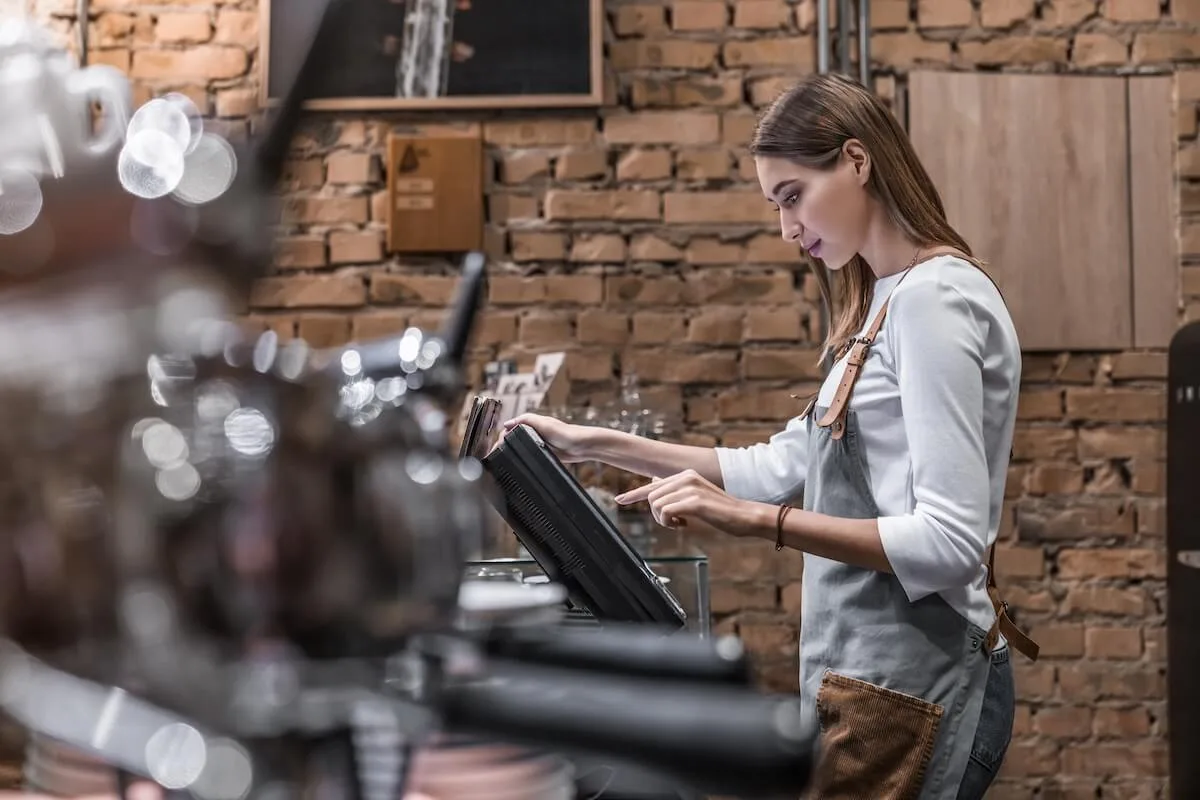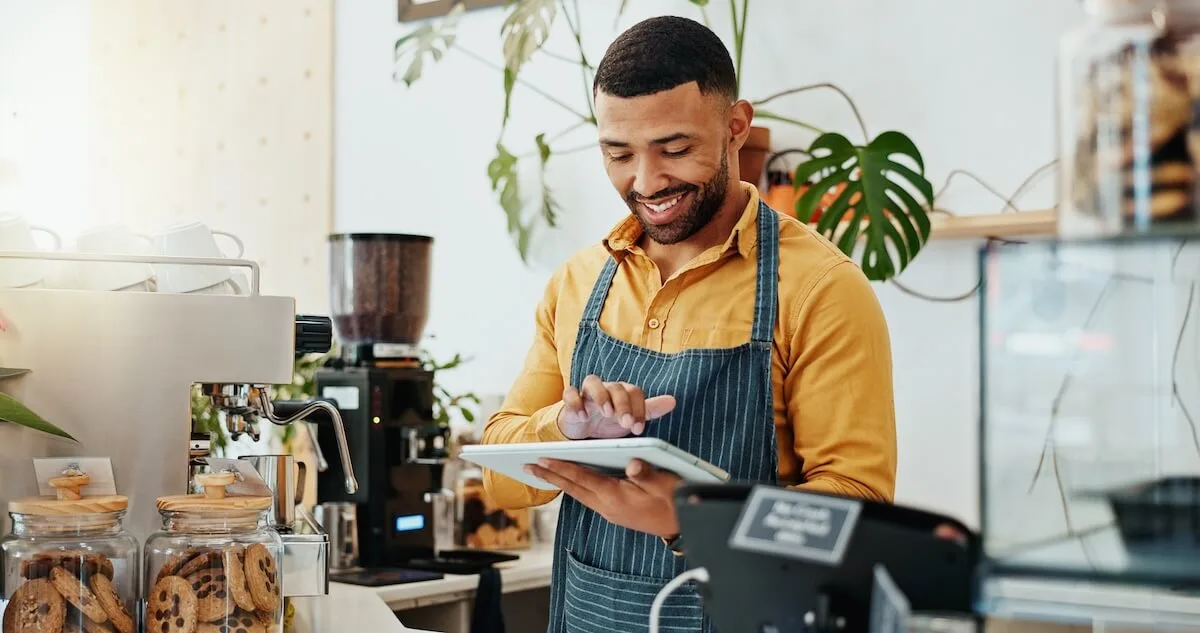6 things you need in restaurant management software
Whether you’re established in the restaurant industry or are new to the business, upping your software game is an excellent way to streamline restaurant operations and improve profitability.
In non-business speak, it makes your life easier—and not just yours, but that of your staff and your customers, too. Things that used to be staples of the restaurant business, like cluttered back offices, crystal ball forecasting, clunky point-of-sale systems, and manual menu management are obsolete.
Many modern management solutions offer a bundle of different types of restaurant tech. Let’s take a look at some of the key features of modern restaurant management systems: how they can automate a number of previously time-consuming tasks, how they can help restaurant functionality as a whole, and how they can lead to an improved customer experience. We’ll also look at what costs to consider when making your decision.
6 things you need in a restaurant management software

Restaurant management software is continually evolving to cover as many parts of the restaurant business as possible. Restaurateurs can now get a suite of management tools in an all-in-one package.
1. Front-of-house operations: Table management
Managing a restaurant’s front-of-house (FOH) can be a lot like juggling: There are a lot of moving parts. Being able to automate that juggling act can save a lot of time and energy that can be dedicated toward improving the guest experience.
Table management, including tracking table availability, optimizing seating, and navigating reservations and waitlists, is one of the most important features good restaurant software can have.
A good system should be intuitive for staff to learn, provide accurate, real-time information on wait times, and integrate reservations automatically. Servers equipped with returning customer data like their birthday, favorite orders, name, and more can help provide an exceptional dining experience for customers where they feel known and respected as a person and not just as a customer.
Business owners should also look for customizability in their table management software. Look for automations like capping the number of covers per time slot, fully customizable floor plans, and convenient, user-friendly data entry like seating assignments.
2. Online reservation and waitlist management
Making reservations is easier than ever for customers if you have the right restaurant management platform.
Long gone are the days when customers had to pick up the phone and call. Now, with apps like Yelp, they can find a restaurant and make a reservation with a few taps. This helps streamline operations for restaurants by automatically entering the reservation in the restaurant system.
Restaurateurs can also use social media to boost reservations in a number of ways, like Yelp’s new Booking Links.
Restaurant management software like Yelp Guest Manager provides super-accurate waitlist times based on real-time data that customers can also see via the app. Yelp Guest Manager quotes wait times with up to 92% accuracy.
Customers in the area can also hop on the waitlist in real-time, again with a few taps on their mobile device. This can help fill gaps in a restaurant’s seating and improve profitability.
3. POS system integration

The right point-of-sale (POS) will get you faster service, tableside payment processing, better data organization, and much more. Some restaurant management software comes with its own proprietary POS systems, while others like Yelp sync with the most popular POS systems out there to allow restaurant owners to choose their favorite.
Odds are, experienced servers have used at least a few different types of restaurant POS systems and already have their favorites. If your staff have a clear favorite they know how to use well, there isn’t much of a good reason to force them to adopt a new one, so software that allows for flexibility is a plus.
4. Online ordering management
Many more restaurants than ever before are offering online ordering, which can be great for customers. Third-party delivery apps now provide flexibility for full-service, quick-service, and fast food restaurants alike to deliver their meals and reach more customers than ever before. Consider the third-party mobile apps as another way to advertise your restaurant to diners and you’ll see another venue for marketing.
Many restaurant management software suites sync seamlessly with popular third-party delivery apps. These orders get integrated directly with your system to prevent any hassle and confusion in order sequencing or customized orders.
5. Inventory management
Keeping up with inventory management is one of the best ways to keep track of food costs, and manual-entry Excel spreadsheets aren’t cutting it anymore. As with POS systems, there is a wide variety of restaurant inventory management systems, some of which your back-of-house staff will be more familiar with than others. Your restaurant management software suite should ideally be able to sync with your chef’s or manager’s favorite inventory tracking tool.
A systematic approach to inventory control can help you make wise choices regarding menu items, like nixing dishes that aren’t selling or changing the pricing on items that are either over- or underpriced.
6. Detailed reports on data
Running a small business often requires a business owner to wear a number of different hats: marketer, accountant, manager, and so on. Wading through piles of data can be exceptionally time-consuming, so any opportunity to automate data workflows can be a godsend for the often-harried restaurant owner.
Crucial information like sales data can help with forecasting, which can lead to wise choices. Longitudinal data can be extrapolated to find long term trends in employee management, for example. If you had an extra-busy summer last year, for example, you can plan for the next year by hiring extra staff. Conversely, if you had a quiet post-holiday season, you can reduce staff demands to minimize labor costs.
How to choose restaurant management software

With the range of restaurant management software out there, restaurant owners may struggle to figure out what tool is the best for them. Since there are many points of convergence in these software solutions, pay attention to what makes the tools stand out.
Affordability and pricing structure
A major consideration for any restaurant owner, whether you’re running a small business or are part of a restaurant group, is the cost of the software. These costs can vary, and can make a big difference in profitability for some restaurants.
Two major aspects of restaurant software prices to consider are these:
- Is all the software functionality available at a flat rate, or do I have to pay extra for the features I need most?
- Will the software charge a cover per reservation, and if so, how much?
A flat rate helps keep life simple for restaurant owners and prevents price shocks at the end of the month.
Yelp Guest Manager offers a flat fee ranging between $129-$299 per month with no cover charge for reservations.
Compare that to OpenTable, for example, which charges $1-$1.50 per cover booked on their app or 25 cents booked via their widget on a restaurant’s website. If you’re operating a restaurant with high reservation bookings, those cover fees can really add up.
Similarly, some systems like Toast offer a limited amount of reservations online at one rate, while lifting the cap at another.
Many restaurant software solutions like TouchBistro sell their functionality piece by piece, which can add up for restaurant owners looking to get a full-service package. If you’re running a small business and only need a few tools, that can be great. But for restaurants with a plan to expand their operations, these services can add up.
Effective onboarding
A tool is only valuable if the person using it knows how to use it—and like with any new software, there can be a learning curve for restaurant owners and staff alike. Even those experienced in the food service industry can take some time to catch up with new software.
Restaurants running at full tilt don’t have time for software misunderstandings, so having support in the transition to a new platform can make a huge difference.
Yelp Guest Manager takes that into full consideration by offering real-time support via a dedicated customer support onboarding manager. This is an actual person assigned to your restaurant who’s available to talk to in person on the phone, which our customers love.
That means that if there are fires to be put out, you can get real answers promptly from a person who knows you rather than having to wade through an instruction manual, talk to a bot, or watch a training video.
Platform reach
Since online reservations factor largely into any restaurant management software, it’s important to consider the reach of the platform. More established platforms like Yelp and OpenTable reach a huge number of customers, while newer players on the block like TouchBistro don’t quite have the same reach yet.
Being able to get your restaurant in front of as many eyes as possible is a great way to encourage restaurant reservations and get more customers in the door.
For those wondering, Yelp is by far the largest player in the arena: 8x more consumers online than OpenTable.
Piecing it all together

When deciding on software, look for broad functionality that covers all aspects of the restaurant business and flexible software syncing for tools that aren’t specifically covered in the software suite. At the same time, consider your budget and how the software can help your profitability…and sanity.
We think a flat rate with a helpful bundle of functions is the way to go, which is what we offer with Guest Manager. If you’d like to see if it’s right for you, reach out to us for a free demo. The grass is pretty green on this side.